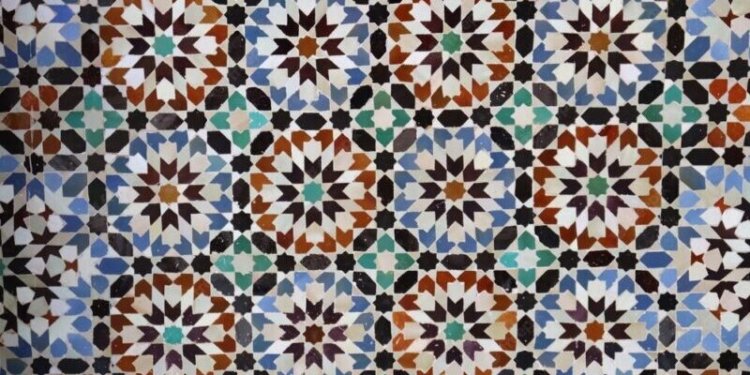Moroccan geometry, also known as “zellige” or “zillij,” is a type of geometric mosaic art that has been popular in Morocco for centuries. It is typically used to decorate the walls, floors, and ceilings of buildings, and is often seen in mosques, palaces, and other public spaces.
The origins of Moroccan geometry can be traced back to the Islamic golden age, when it was widely used as a form of architectural decoration in the Middle East and North Africa. However, it is also influenced by other artistic traditions, such as Byzantine, Roman, and African.
One of the defining features of Moroccan geometry is the use of intricate, geometric patterns. These patterns are created using small, glazed tiles called “tesserae,” which are cut into a variety of shapes and arranged in complex arrangements to create the desired design. The patterns are often symmetrical and feature repeating geometric shapes, such as circles, squares, triangles, and hexagons.
In traditional Moroccan geometry, the tesserae are arranged by hand using a technique called “doukkala,” which involves creating a rough outline of the design on a surface, and then filling it in with the tesserae. The tesserae are held in place using a thin layer of plaster or cement, and the gaps between them are usually filled with grout.
The colors used in Moroccan geometry are also an important part of the art form. Traditionally, the tesserae were made from natural materials, such as clay, and were glazed using natural pigments. This resulted in a range of earthy tones, including red, yellow, and brown. Today, Moroccan geometry often incorporates a wider range of colors, including bright, bold shades like blue, green, and purple.
In addition to its use in architecture, Moroccan geometry has also been incorporated into other forms of art, such as textiles and pottery. It has even inspired contemporary artists and designers, who have used it as a starting point for their own creations.
Overall, Moroccan geometry is a rich and complex art form that has been a part of Moroccan culture for centuries. Its intricate patterns and vibrant colors have made it an enduring symbol of the country’s artistic traditions, and it continues to inspire artists and designers around the world.




